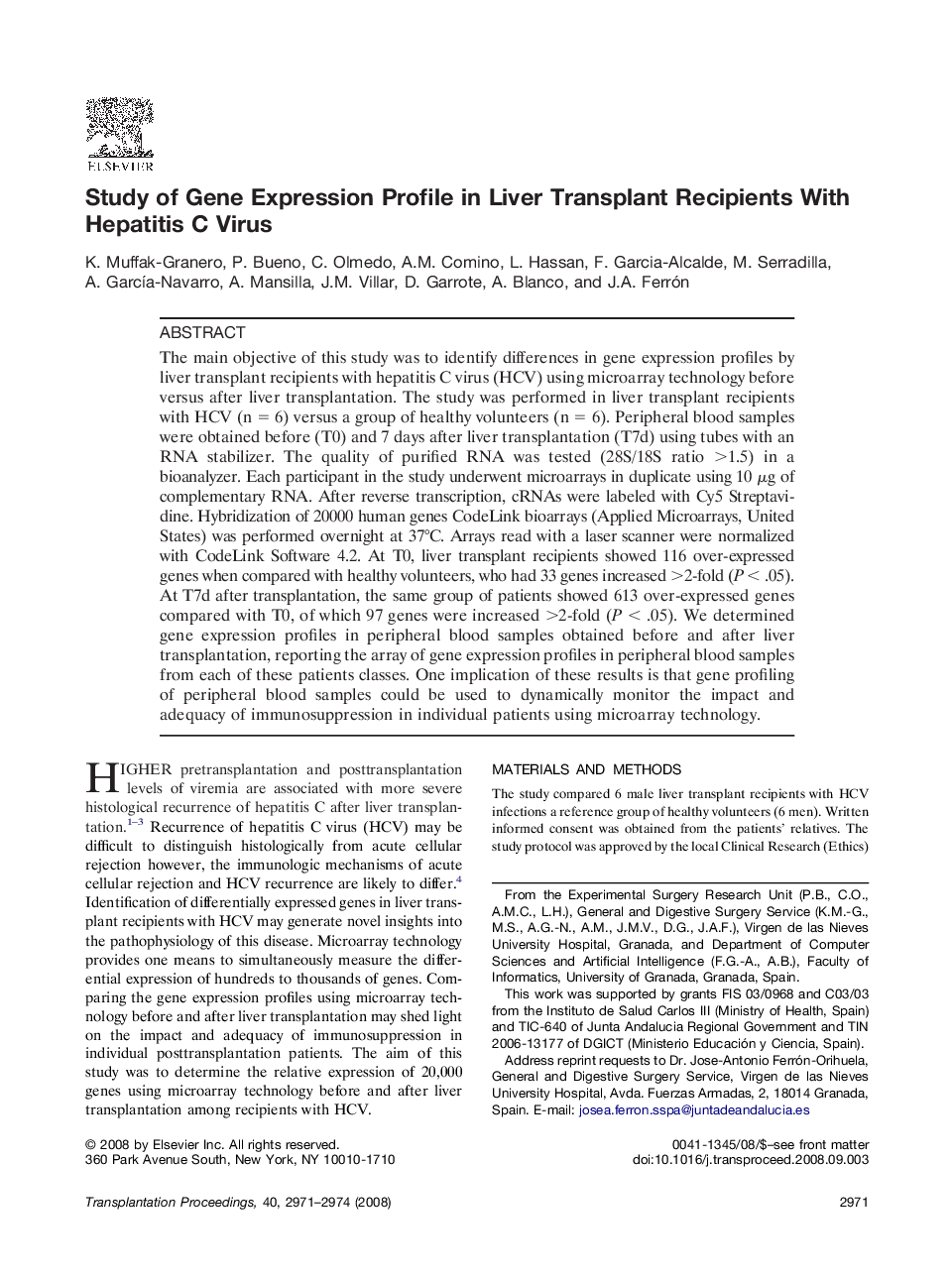| Article ID | Journal | Published Year | Pages | File Type |
|---|---|---|---|---|
| 4261321 | Transplantation Proceedings | 2008 | 4 Pages |
The main objective of this study was to identify differences in gene expression profiles by liver transplant recipients with hepatitis C virus (HCV) using microarray technology before versus after liver transplantation. The study was performed in liver transplant recipients with HCV (n = 6) versus a group of healthy volunteers (n = 6). Peripheral blood samples were obtained before (T0) and 7 days after liver transplantation (T7d) using tubes with an RNA stabilizer. The quality of purified RNA was tested (28S/18S ratio >1.5) in a bioanalyzer. Each participant in the study underwent microarrays in duplicate using 10 μg of complementary RNA. After reverse transcription, cRNAs were labeled with Cy5 Streptavidine. Hybridization of 20000 human genes CodeLink bioarrays (Applied Microarrays, United States) was performed overnight at 37°C. Arrays read with a laser scanner were normalized with CodeLink Software 4.2. At T0, liver transplant recipients showed 116 over-expressed genes when compared with healthy volunteers, who had 33 genes increased >2-fold (P < .05). At T7d after transplantation, the same group of patients showed 613 over-expressed genes compared with T0, of which 97 genes were increased >2-fold (P < .05). We determined gene expression profiles in peripheral blood samples obtained before and after liver transplantation, reporting the array of gene expression profiles in peripheral blood samples from each of these patients classes. One implication of these results is that gene profiling of peripheral blood samples could be used to dynamically monitor the impact and adequacy of immunosuppression in individual patients using microarray technology.
